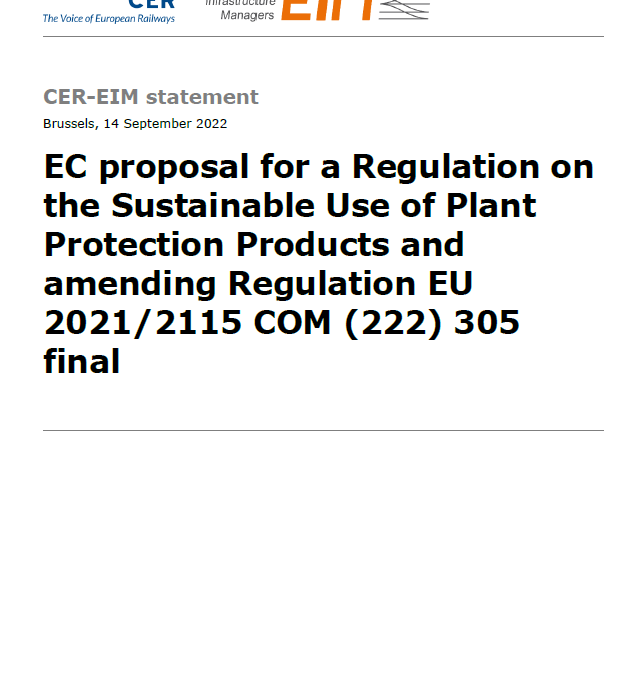Other Publications
The railway sector welcomes the Commission’s initiative to replace the SUD Directive with a new Regulation and share the Commission’s objectives on reducing the use of plant protection products. The railway sector works hard to reduce the use of plant protection products for railway infrastructure. However, the application of this draft Regulation as it stands would entail major problems for the safety of rail services and the appropriate maintenance of railway tracks in all European countries.
Railway Infrastructure Managers (IMs) have the primary legal obligation to ensure a safe rail operation along all railway routes. One of the key safety measures is to keep all railway tracks free of vegetation. Therefore, IMs use plant protection products as part of the vegetation control on the railway track area. The use of these products requires explicit approval from public authorities and complies with strict rules.
IMs have been intensively testing non-chemical methods of vegetation control for several years. However, until such methods are commercially viable, proved to be efficient and approved for use in the railway network by the relevant authorities, IMs remain dependent on the use of plant protection products on track areas to ensure safe rail operations.
On this background, the Commission proposal would have unintended impact on railways safety by significantly restricting the use of plant protection products on railway tracks. In certain cases, it would even make their usage impossible in very large areas (Natura 2000, water catchment and watercourses, vulnerable groups and human settlements). As a result, and subject to clarification of what the definition of “sensitive areas” would cover (see: Article 18 as described in Article 3(16)), the application of the text as it stands means that it would no longer be possible to treat railway tracks that run through these sensitive areas. Any ban on the use of plant protection products in these areas would make it impossible to control vegetation on those railway tracks and jeopardise the safety of rail operations. This could impact almost up to 40% of some national rail networks according to preliminary calculations.
Moreover, Article 18 provides the possibility of a 60 days derogation for the use of plant protection products in “sensitive areas”. This derogation does not consider the aspects of railway operations and, in any case, a short, limited time of 60 days does not fit with railway operational management and ongoing maintenance. In addition, the weather conditions as well as the deployment planning and availability of the equipment required for vegetation control must be taken into account.
Article 18 also sets the conditions for the derogation, i.e. to prove a serious and exceptional risk of the spread of quarantine pests or invasive alien species. These conditions cannot be fulfilled for most maintenance works of railway tracks and safety paths. In fact, most weeds are not quarantine pest or invasive alien species.
The obligation to place display notices regarding the use of plant protection products on the perimeter of the area to be treated is also virtually impossible to implement considering some 200.000 km of tracks in Europe. Except for some very limited zones (e.g.: railway stations), the access to the railway perimeter is forbidden for third parties anyway. This is why such obligation for placing a display along the tracks is not realistic and would not be useful.
Finally, the plant protection products mentioned in Article 19, classified as “harmful to aquatic organisms with long-lasting effects”, “very toxic to aquatic organisms with long-lasting effects” or “toxic to aquatic organisms with long-lasting effects”, currently include all plant protection products that are approved according to Regulation 1107/2009 for use on railway tracks in Europe.
While the legislative process is about to begin, CER and EIM would ask to consider and better integrate the specificities of the railway sector in the proposal for this new regulation. Railway IMs are fully committed to contribute sharply to the decarbonisation and an even more sustainable transformation of the European transport. However, these goals cannot be achieved to the detriment of the operational safety for passengers and freight, which must always be guaranteed.



